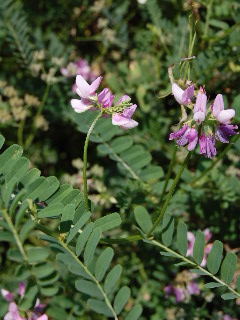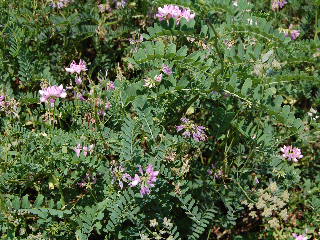
Vetch includes any of several mostly climbing plants that belong to the genus Vicia. These are plants of the legume family that have pinnate leaves ending in tendrils and bearing pea-like flowers in small pods.
Many of the vetches (especially Hairy Vetch) are cultivated for soil improvement because of their ability to fix nitrogen into the soil. Vetch is also planted by farmers as a forage crop for grazing animals such as cattle.
One interesting note about the vetches (and other legumes) is that, while they do have the ability to fix nitrogen into the soil, they will be more efficient at this process if the seeds are “inoculated” with some form of the Rhizobium bacteria before they are planted.
This inoculant (usually in powder form, often needing to be combined with water for application to the seeds) is generally available for purchase at the farm supply store or wherever you purchase or order your vetch seeds from.
The bacteria help the plants form “nodules” on their roots, these being the areas where the nitrogen is fixed.
The hairy vetch makes a great winter cover crop for your vegetable garden. If you sow the seeds in the late summer, the plants will have time to take hold, and the spring regrowth of the vetch will be quite vigorous and plentiful.
Tilling the vetch (tops, roots, and all) into the soil before planting the spring garden will add much nitrogen, as well as additional organic matter, to the site.
Hairy vetch generally likes a well-drained soil, although I’ve never found it to be very demanding of soil conditions at all--the exception being only very poorly drained areas or areas of heavy clay, containing little organic content.

And, in terms of temperature and weather conditions, the vetch seems to withstand all but the most severe winters.
The winter hardiness of the hairy vetch makes it quite useful on your winter vegetable garden as its vigor aids in the suppression of invading weeds on your site.
Crown vetch is a very desirable vetch for sowing on steep banks that might otherwise be subject to soil erosion. The deep and sturdy root system helps the vetch catch hold and establish on all but the most inhospitable of growing sites.
The crown vetch makes an easy-to-establish, almost maintenance free, and quite attractive ground cover for such areas.
The plants have dark green foliage and attractive flower clusters (see accompanying photos). Bees seem to enjoy these flowers, too!
Once established, the crown vetch dies back to the crown (hence the name) in areas of cold winter weather. However, top growth resumes again as the warm temperatures of spring begin.
While not absolutely necessary, the top growth of the crown vetch can be cut back annually to keep it within the desired area and to stimulate additional thick and vigorous growth.
 Vetch includes any of several mostly climbing plants that belong to the genus Vicia. These are plants of the legume family that have pinnate leaves ending in tendrils and bearing pea-like flowers in small pods.
Vetch includes any of several mostly climbing plants that belong to the genus Vicia. These are plants of the legume family that have pinnate leaves ending in tendrils and bearing pea-like flowers in small pods.
 And, in terms of temperature and weather conditions, the vetch seems to withstand all but the most severe winters.
And, in terms of temperature and weather conditions, the vetch seems to withstand all but the most severe winters.